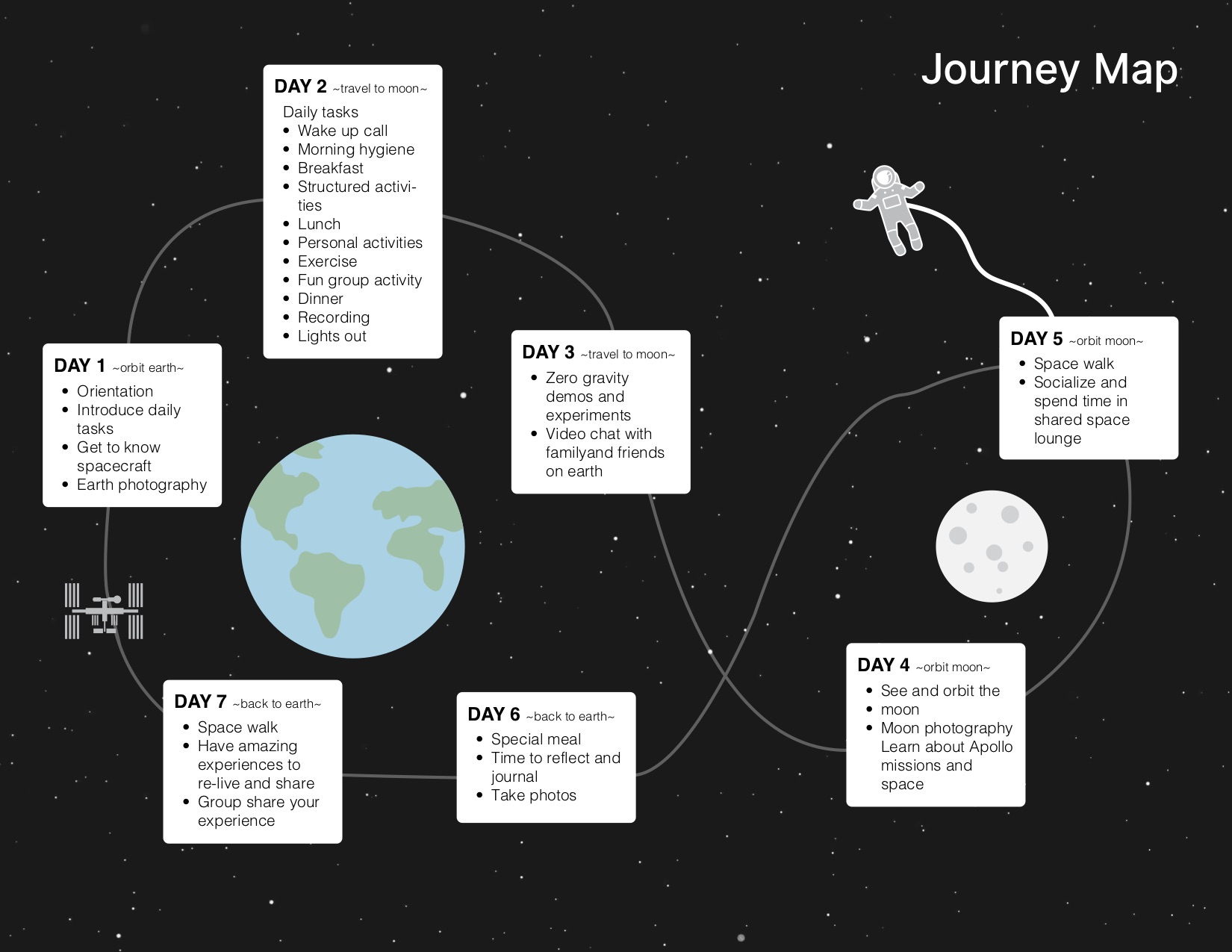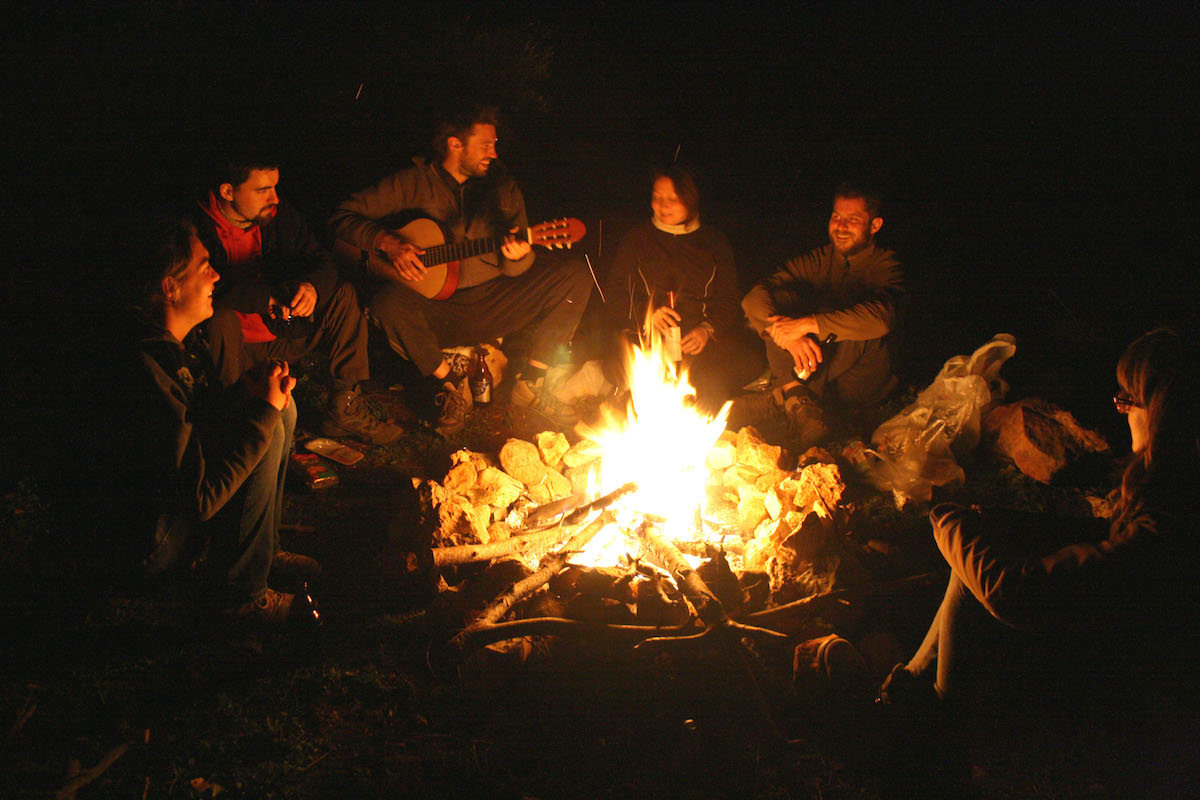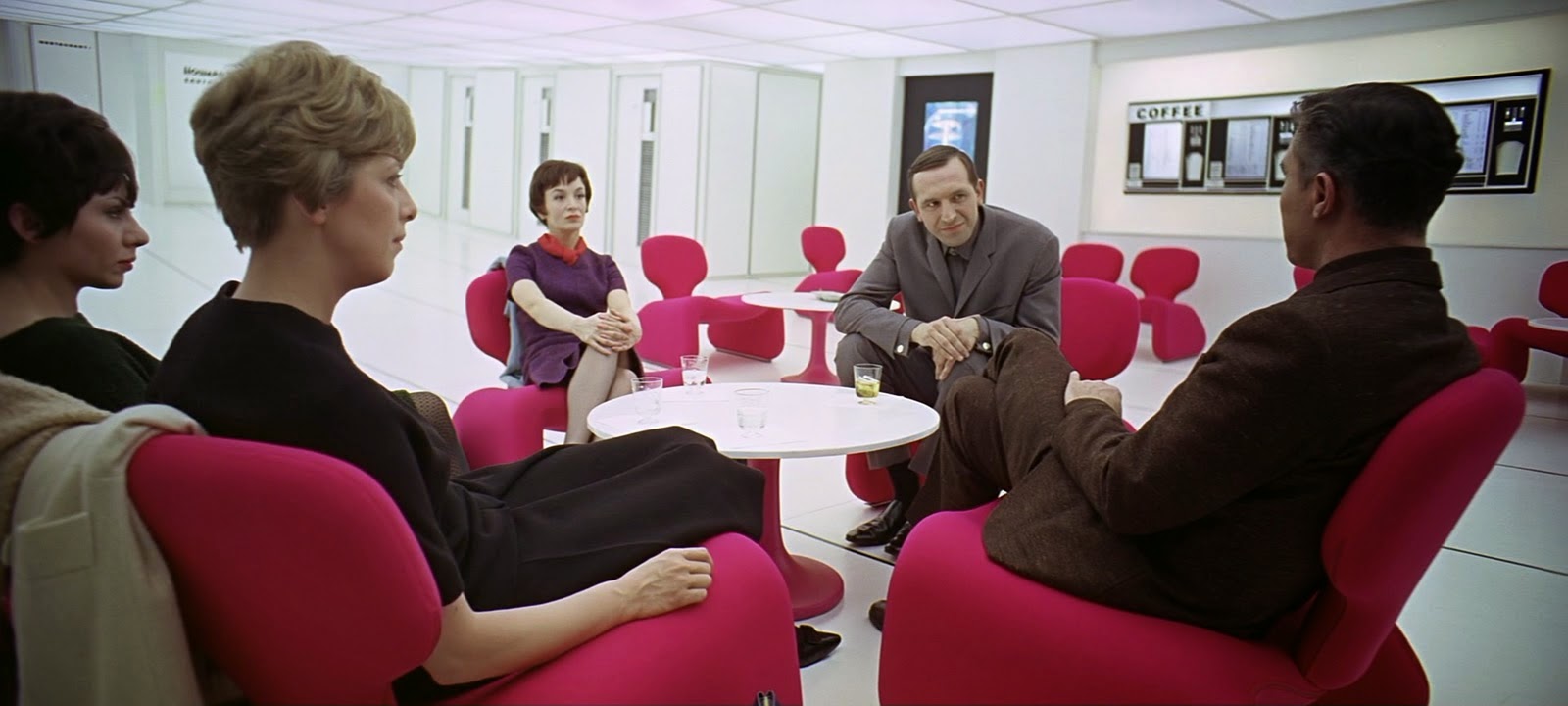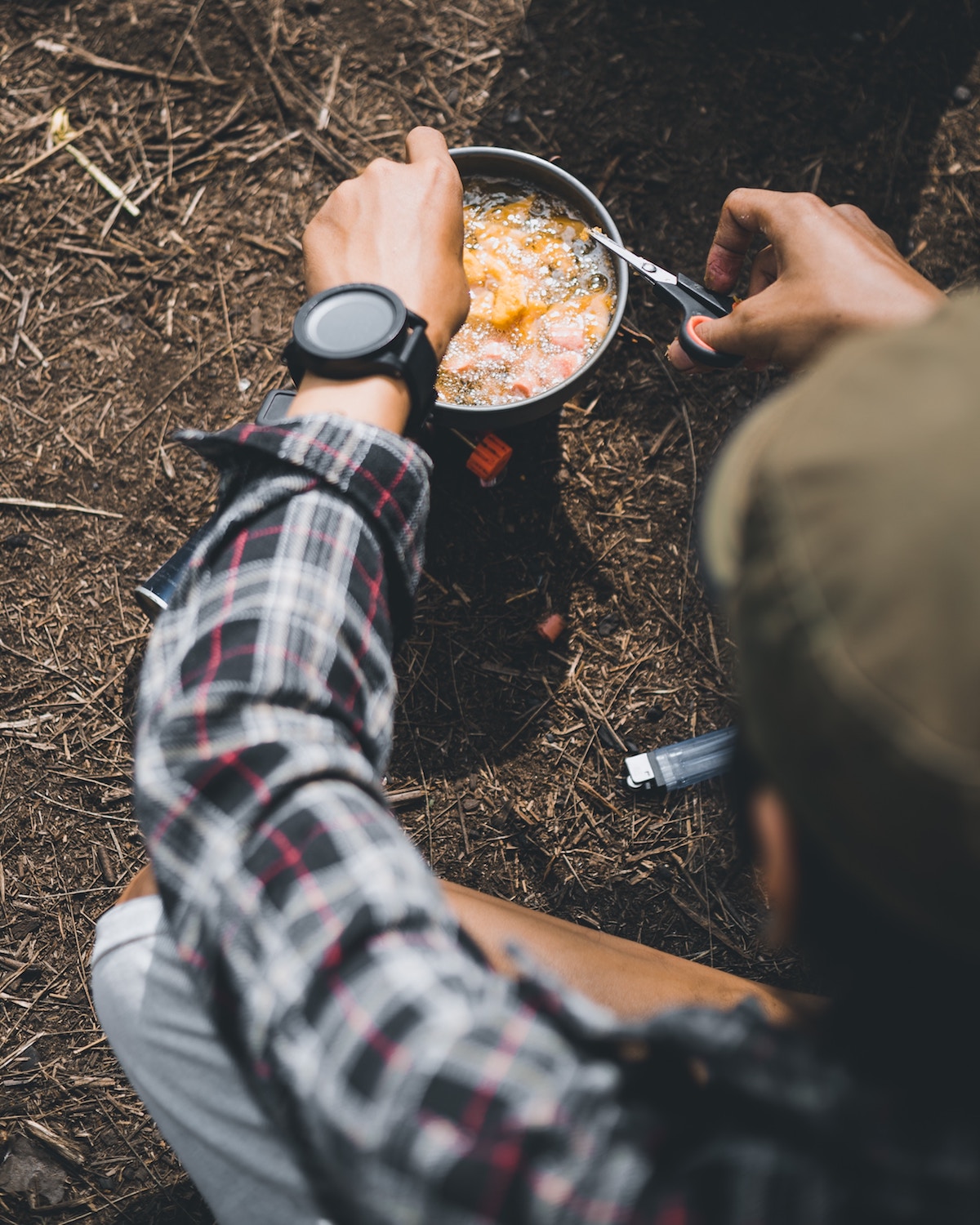Designing
Space Tourism
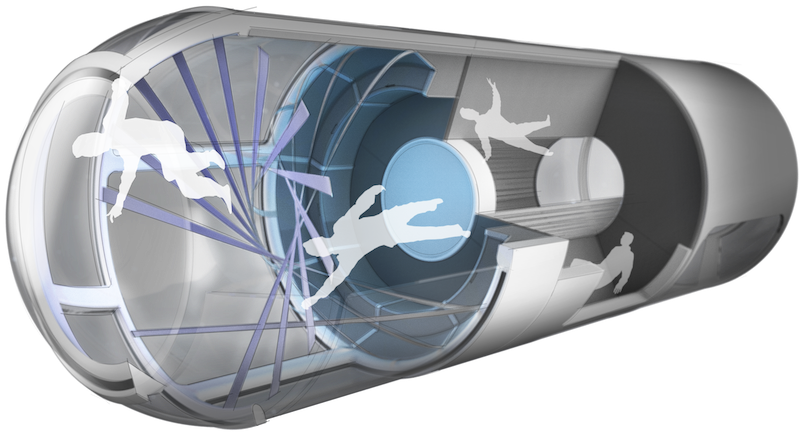

Objective
TEAGUE has worked with Boeing for the past 70 years designing the experience of air travel.
For this project, TEAGUE wanted us to envision and design an ideal space travel experience for a 7-day trip orbiting the moon.
Focus Areas
During our research, we were really interested in the fact that space travel takes a long time. Even a short trip can take a week, most of which there is nothing to see and nowhere to go. Essentially, the tourists are trapped together in a very small room and spending every waking moment together.
Knowing that, there were 3 main areas we wanted to focus on:
- 1. Conflict
- 2. Limited Space
- 3. Orientation and Weightlessness
1. Conflict
People are not meant to be confined in a small area together for long periods of time. Without the ability to “escape” from human interaction, people get frustrated and start conflicts.
This is called irrational antagonism.
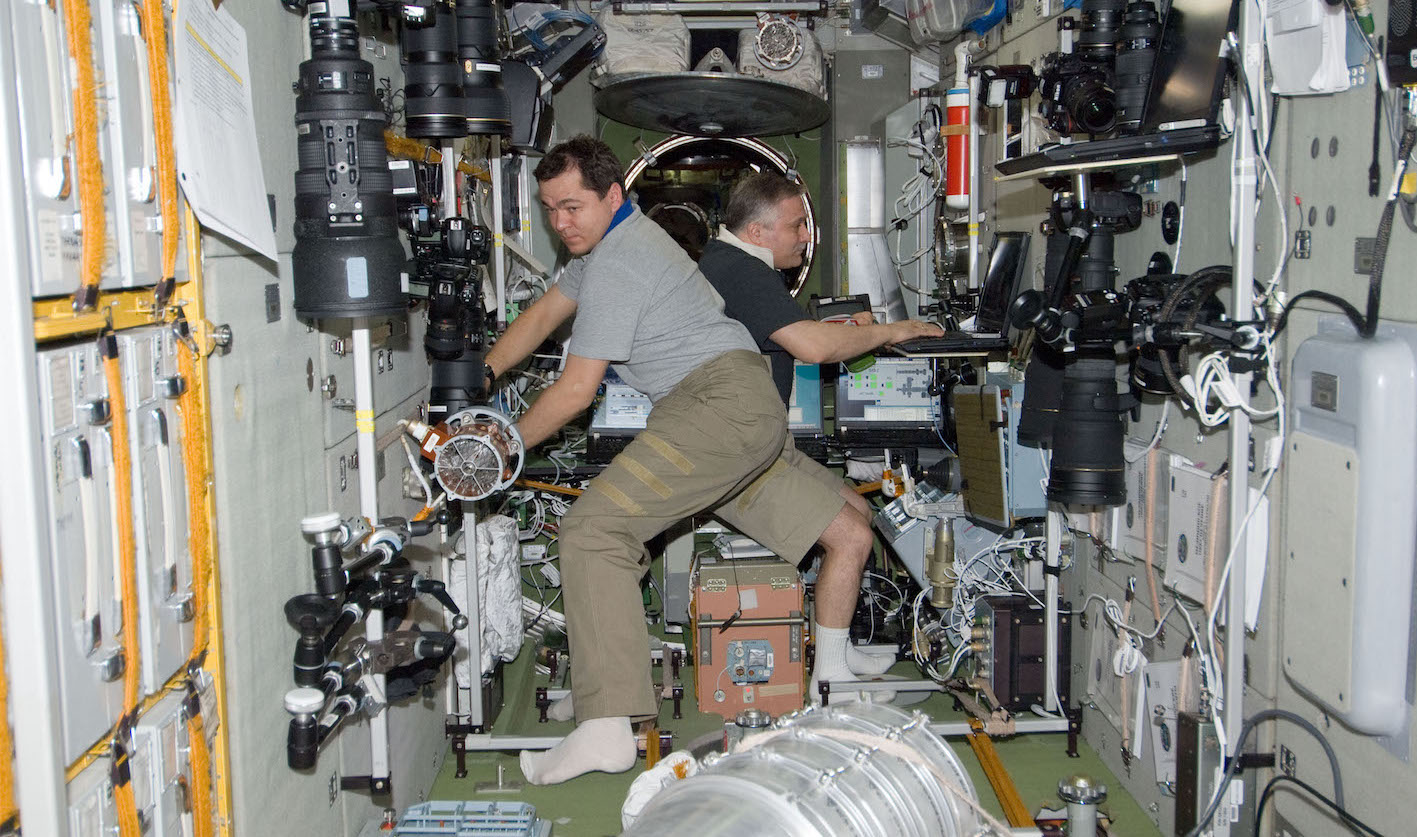
Research Point: Irrational Antagonism
“When one has nothing left to reveal to the other, when even his unformed thoughts can be anticipated… the way he blows out a pressure lamp or drops his boots on the floor or eats his food becomes a rasping annoyance.”
– Packing for Mars, Chapter 2: Life in a Box
Research Point: Immersion Studies
We also confined ourselves in a storage closet for several hours to understand how that affects interactions.

2. Limited Space
The dimensions of the pod were quite small. How do we design for many different scenarios and activities and make them fit inside a small space?
3. Orientation
There is no up or down and everyone is weightless. There is no ground plane for us to conceptually ground ourselves. Can we leverage this in our design?
Design
With conflict, limited space, and lack of orientation in mind, we designed a space that was empty but could transform into different configurations using partition straps.
Straps also double as a form of navigation. To move around in space, people need to grab onto something and push away. In this case, they can grab a strap and pull to propel themselves around.
As straps twist, they create structures that partition the space in different ways. This is made possible by weightlessness. Because everyone is weightless, the structures do not need rigidity; fabric straps are sufficient. A loose twist opens up the space; ideal for playing around or looking outside. A tighter twist partitions the space into pockets, allowing tourists to not be together all the time.
Here are some configurations we envisioned:
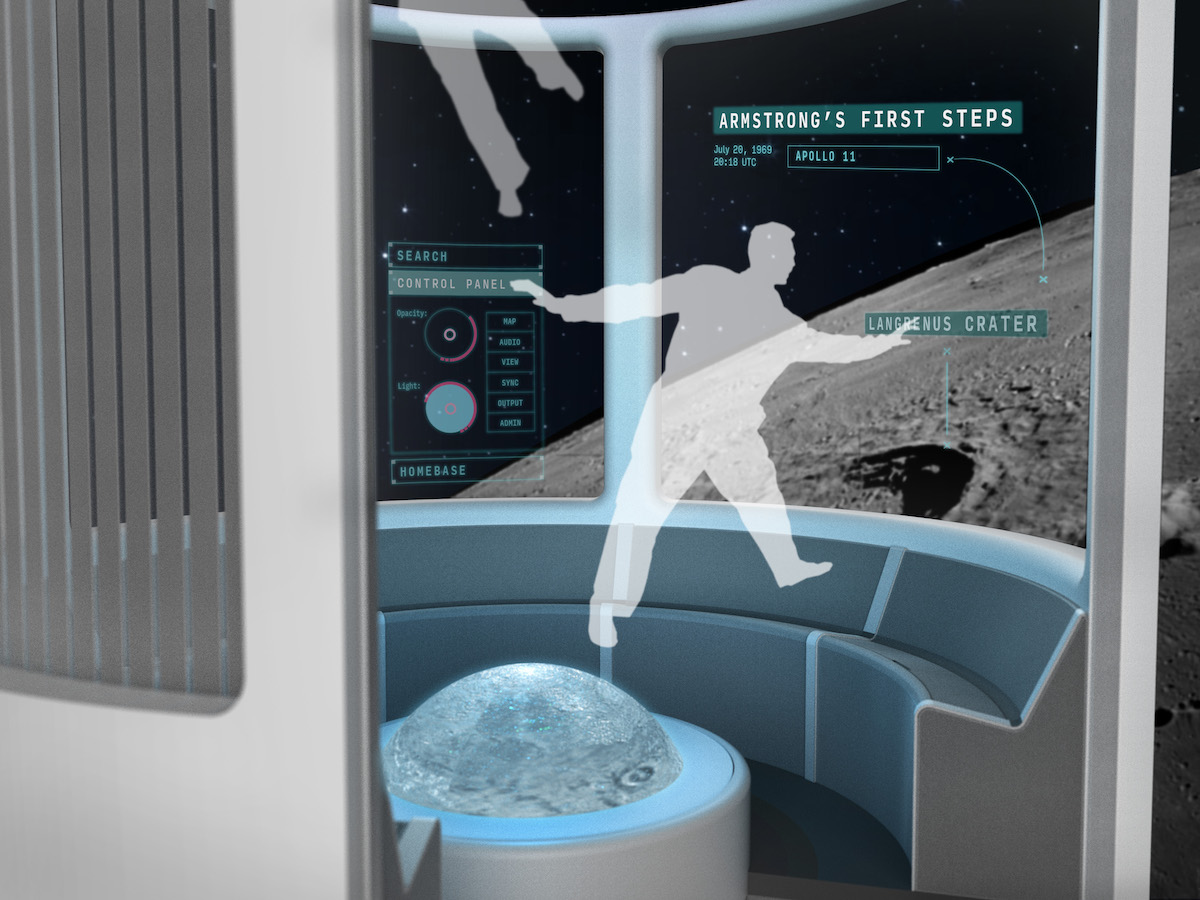
Config / Tour
When tourists want an unblocked view of the outside, straps can fully untwist.
Contextual information is projected onto the windows to help show the constellations and landmarks outside.
Meanwhile, the holographic display on the table shows the journey route and what’s coming up next.
Config / Play
Most of the trip, there is nothing to see outside; just vast emptiness. Tourists can untwist the straps and explore zero gravity by playing around.
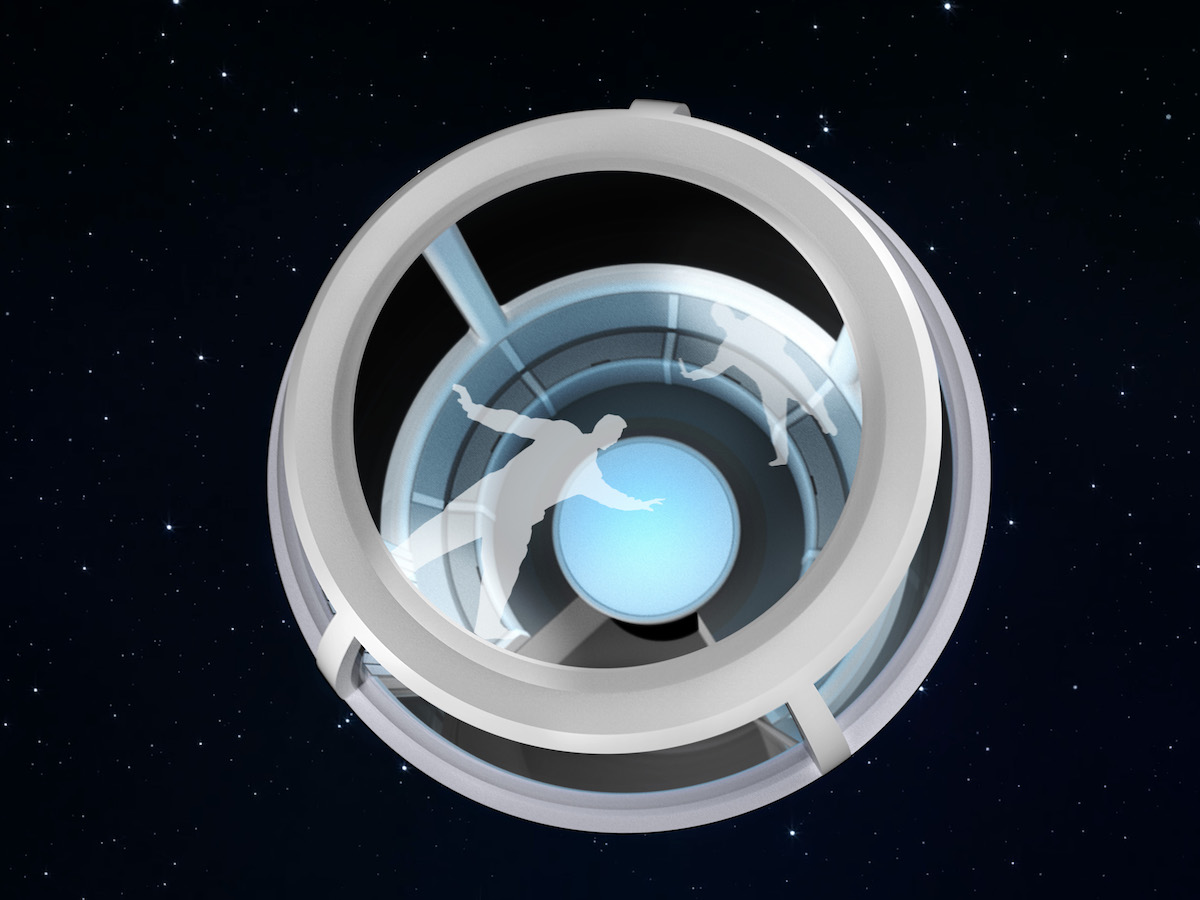
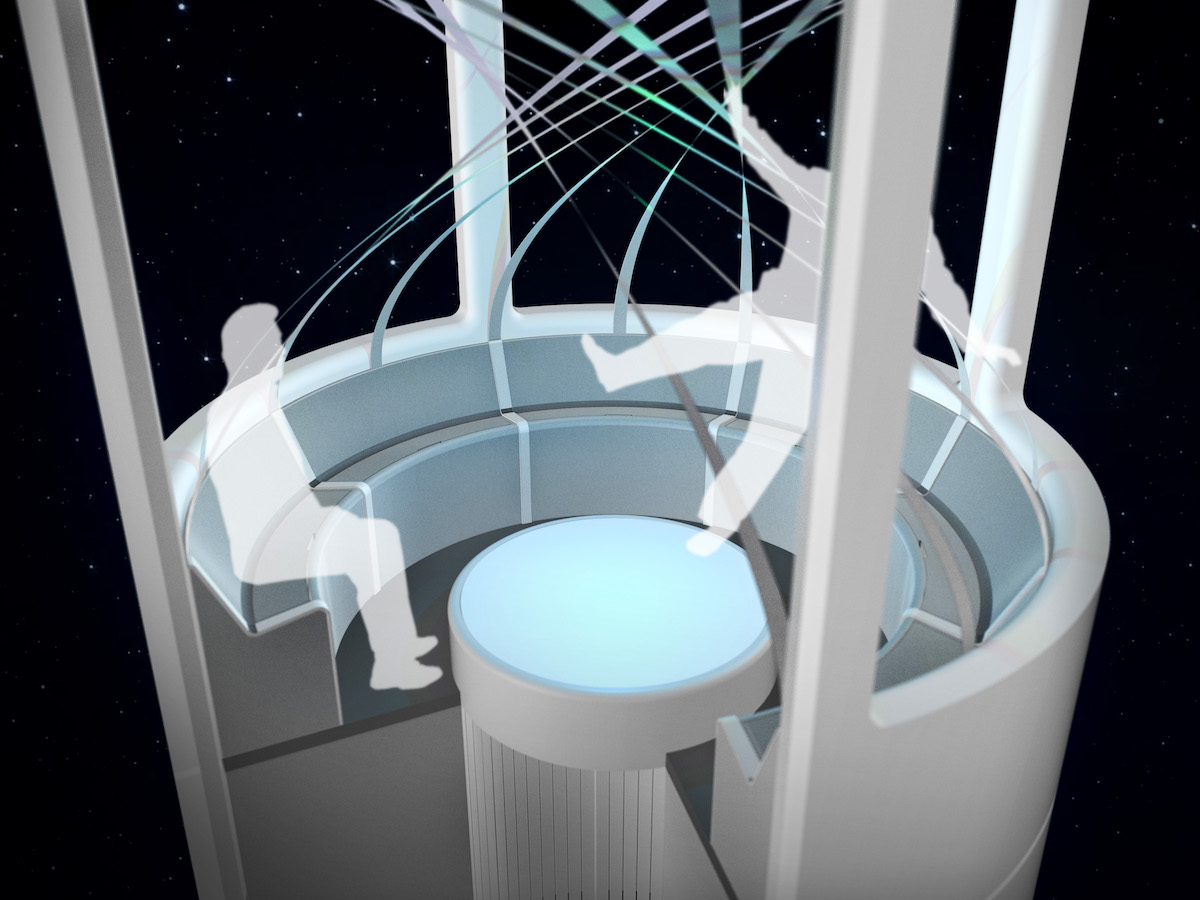
Config / Campfire
While sitting down isn’t necessary in space (your legs don’t get tired), the act of sitting down helps people relax and hang out.
Inspired by campfires, we designed circular seating where people can strap themselves down and hang out during the end of the day, share stories, eat dinner, and enjoy each other’s presence.
Config / Break out
Sometimes, people just want a break from others. They can go to one of the partitions created by twisting straps and be alone.
Here, a tourist is underneath the dome, enjoying the view.
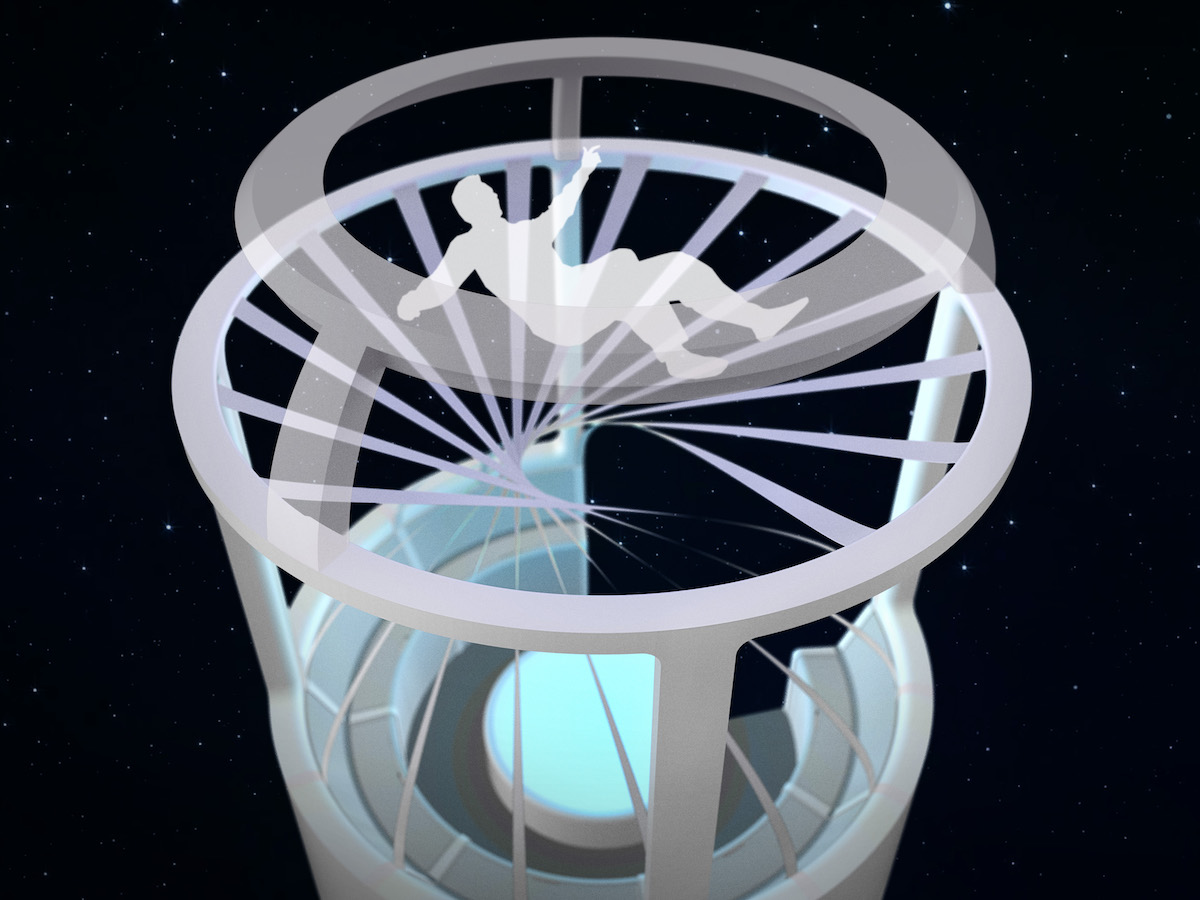
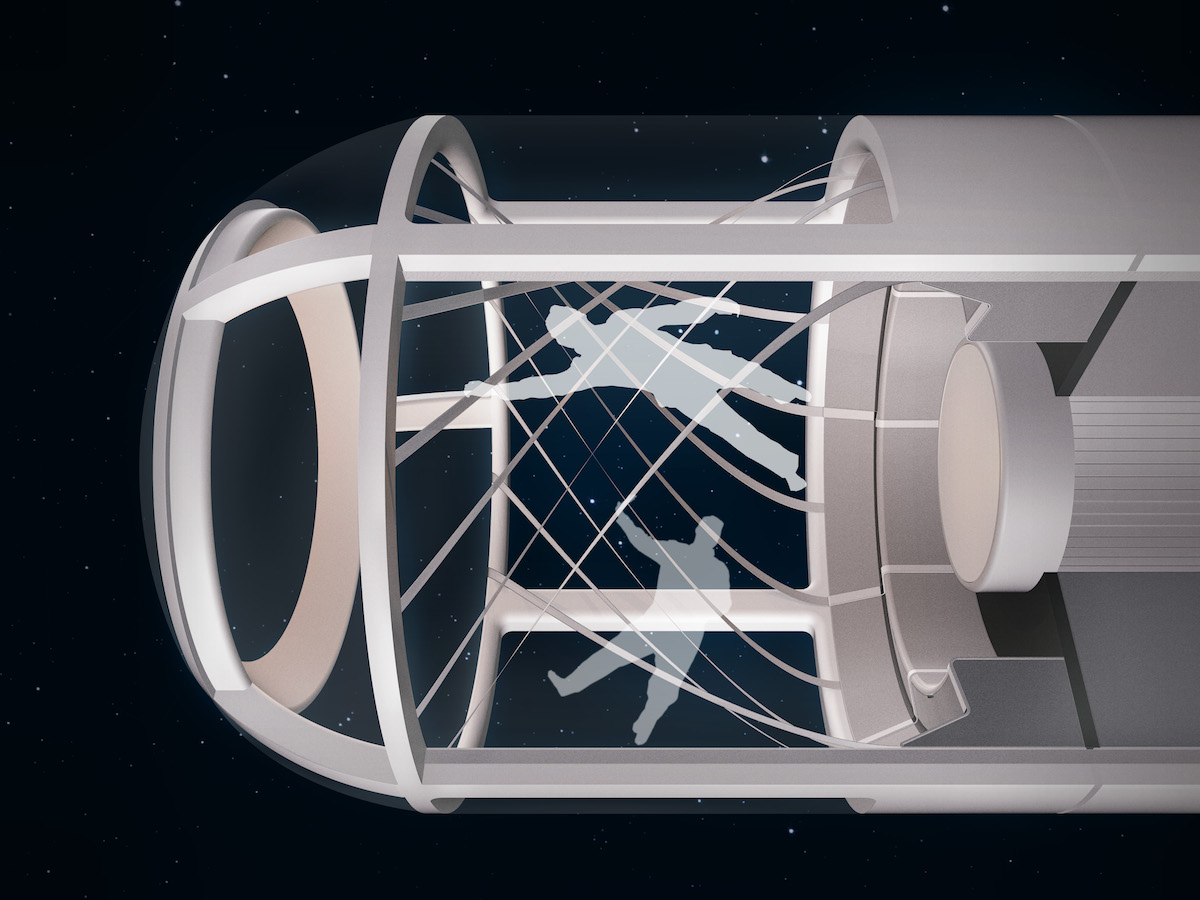
This works in different orientations, allowing tourists to grab on and suspend themselves in different areas.
Design
Misung Pollmann
Nicolas Iwanchuk
Nirawit Jittipairoj
Samantha Spaeth
Physical Mockups
Misung Pollmann
Nicolas Iwanchuk
Samantha Spaeth
CAD
Nirawit Jittipairoj
Renderings
Nirawit Jittipairoj
Process
Designing for space was incredibly difficult. I read as much as I could on the topic and conceptually understood that people would be living in zero gravity.
However, it was an entirely different thing to understand how to design for a weightless environment. There’s no mobility, there’s no orientation.
This project was an exercise in coming up with daring designs while making sure they were grounded in reality.
It was also a lesson in team dynamics. As we studied conflicts in space, we learned how about the challenges of working in a team on a changing and abstract design brief.
TEAGUE has also written about the project, which can you read on their blog!
